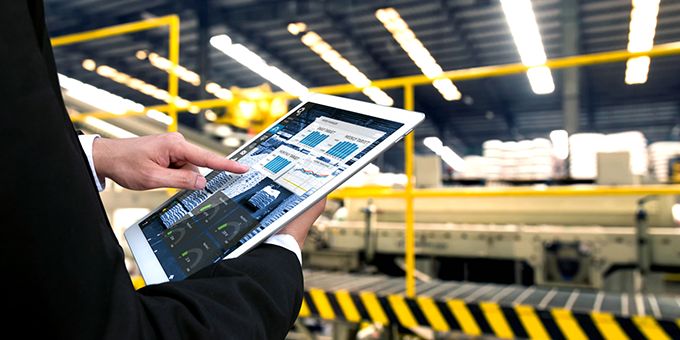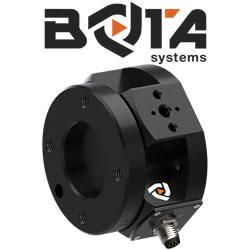Low demand scenarios necessitate a different strategy: tools that can produce more pieces per edge while providing process security. Here, the goal should be fewer production interruptions and the capability to run unmanned production.
 The Need for Speed - Manufacturers Must Adapt Workers’ Skills for Fast Covid-19 Recovery
The Need for Speed - Manufacturers Must Adapt Workers’ Skills for Fast Covid-19 Recovery

Claudia Jarret, US Country Manager | EU Automation
The “new normal” COVID-19 era demands faster production speeds, as well of quality, of US industrial manufacturers. Here, Claudia Jarret, US country manager at EU Automation, explains that if manufacturers want to emerge stronger from the COVID-19 crisis, they mustn’t overlook the importance of reskilling their workforce for maximum economic recovery.
Manufacturers have faced both high and low demand scenarios during the coronavirus pandemic. On the one hand, production of high-tech equipment has risen — as the demand for computers, peripherals, communications equipment and semiconductors reaches an all-time high — as has demand for appliances. Automotive manufacturers are filling order backlogs that have accumulated during lockdown.
That’s according to research by JP Morgan, which also states that, by mid-summer 2020, factories were operating at 70 per cent capacity, up from a low of 59 per cent in April. In these cases, manufacturers need tooling solutions that can help increase metal removal rates, reduce cycle times and support quick changes between production batches.
However, other manufacturers are experiencing low demand. Take aviation manufacturing for example, which JP Morgan reports “has been hard-hit by a decline in air travel, and energy is experiencing a glut as more commuters work from home.”
Low demand scenarios necessitate a different strategy: tools that can produce more pieces per edge while providing process security. Here, the goal should be fewer production interruptions and the capability to run unmanned production. Some areas of mass manufacturing, for instance, have all but stopped production altogether. Others have sought to diversify into new sectors — which again requires quick setups and fast changes between production batches.
In either case, it seems that fast and quality production is of the essence. Meanwhile the key to profitable production lies in a combination of having the best setup of tools and the knowledge on how to apply them correctly. Against the uncertainties of COVID-19, could automation be the glue that binds all these strategies together?
Making connections
Manufacturers are aware that automation can increase the speed of production lines. 28 per cent of manufacturers surveyed in the recent Digital Factories 2020 report by PricewaterhouseCoopers (PwC) said they planned to “implement a variety of technologies that help workers get more done, faster, and improve processes.”
That reports cites the example of Continental Automotive, which has implemented an SMD (surface mounted device) line throughout its production setup, to meet shorter development cycles while also maintaining quality and efficiency. The SMD approach involves a series of comprehensively networked and automated sensors that show the material demands for current and upcoming production cycles and autonomously orders the required components from the connected warehouse systems.
According to Continental Automation, it’s SMD system has increased efficiency, improved the plants’ economics, while allowing more flexibility.
Integrating sensors into a production line also helps the overall system and facility to be monitored much more closely. Inputs and outputs can be quantified, and the data can be tracked and analyzed by a remote monitoring system. These systems can be especially useful to manufacturers seeking to diversify into new sectors, and run new or unfamiliar materials and component designs through their machines.
Of course, for machines to continue to perform with supreme precision, they must be well maintained to prevent faults that can impact product quality. Maintaining a relationship with an industrial parts supplier means as soon as a fault is detected, a repair can quickly be completed. EU automation supplies new, reconditioned and obsolete industrial parts, allowing any equipment model to be fixed. Stock items are shipped withing 24 hours, ensuring minimal disruption to the production line.
To upskill, or not to upskill?
But where do human workers factor into all of this? PwC’s Digital Factories 2020 report rightly identifies “collaboration between workers and machines as a key area of development, and one where many companies may still need to take a closer look.”
Automation affects workers’ skills in two contradictory ways. Smart technologies can reduce the number of workers needed on a factory floor, but in many cases increase the levels of skill required from the remaining workers. Yet, conversely, automation can also reduce the levels of skill needed from other employees.
The solution, therefore, is that companies must invest in, and train, their staff to get the most from the latest technologies like SCADA and enterprise resource planning (ERP) systems. In doing so, they can ensure the automated future will create opportunities for employees of varying skill levels.
McKinsey & Company agrees the COVID-19 pandemic has accelerated the automation revolution, but “most organizations are not ready to address” these challenges. It’s own report, Building the vital skills for the future of work in operations recommends two major changes to skills across the workforce. First, upskilling, “in which staff gain new skills to help in their current roles. Second, reskilling, “in which staff need the capabilities to take on different or entirely new roles.”
So, companies that effectively improve — and adapt — their workers’ skills are the ones that will get ahead. This is possible through better use of data, data management and sharing and better reporting — and, therefore, better communication — in the plant.
Industry 4.0 and data-driven technologies will be key to facilitating crucial collaborations between workers and machines. As seen in Continental Automation’s factory, workers can be brought seamlessly into the “Industry 4.0 fold” while the wider factory setup achieves faster, quality production to overcome the shifting markets created by COVID-19.
All of this might create the impression that Industry 4.0 requires significant capital investment from businesses. Actually, that does not need to be the case. Instead, the latest specialist technologies, like sensors, can be applied as part of a low-cost digital retrofitting strategy. This is where an industrial automation parts supplier, like EU Automation, can help — whatever the ups and downs manufacturers face.
The content & opinions in this article are the author’s and do not necessarily represent the views of RoboticsTomorrow
Comments (0)
This post does not have any comments. Be the first to leave a comment below.
Featured Product

